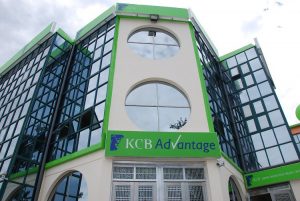Land Prices Accelerate In The First Quarter Of 2019 – Report

[IMAGE/ COURTESY]
Land price growth accelerated marginally in Nairobi in the first quarter of 2019, whilst slowing in the city’s satellite areas, a new report has indicated.
The report by Hass Consult entailed an average of three very different types of price trends, those in the city, developing outskirts and developed outskirts of the city.
“We are clearly seeing the city and its surrounds emerge as three types of land market, such that land price growth is
becoming increasingly predictable in each area based on past rises and current land availability,” said Sakina Hassanali, Head of Development, Consulting and Research at Hass Consult.
A clump of now well-developed areas that experienced very sharp land price rises and giddy levels of construction are now correcting with their current potential levels reached. Such areas within Nairobi include Upper Hill, Kilimani, and Nyari, as well as Spring Valley and Donholm.
“All of these areas have seen price rises well ahead of the trend for periods of a year or more, since 2015. But with
development now well advanced in these areas and their narrative having moved to occupancy levels, land prices rises have become subdued and even marginally negative,” said Sakina.
Examples of such areas, now correcting from a period of overheating are Spring Valley where land prices fell by 0.62 percent in the year to the end of March 2019, and Kilimani, where prices fell by 1.07 per cent over the year.
“In reality, these prices are not so much ‘correcting’ as standing still in the face of the now large inflow of new property,” said Sakina.
Read: How To Gather And Gain On Business Intelligence In The Era Of Big Data
The second cluster of areas are those with ample land, where a great deal of purchasing is still underway, but ample supply has limited the competitive pressure on pricing. The strongest example of the well-supplied areas is Karen, which accounted for 31.5 per cent of all the land advertised for sale in Nairobi.
“Such ample land supply in areas such as Karen, Runda, Lavington and Westlands has made for somewhat more subdued price growth, although these areas all report positive increases in land prices in the last year,” said Sakina.
In Karen, land prices rose by 3.22 per cent in the year to end-March. However, the strongest rises came in areas offering limited opportunities for new types of developments in desirable areas.
These areas within Nairobi included Loresho, where land prices rose 9.95 per cent in the year to end-March, Ridgeways, where they rose by 8.58 per cent, and Kitisuru, where they rose by 7.16 per cent.
“All of these areas delivered rises significantly above inflation, which is currently running at just over 4 per cent,” said
Sakina.
Together, the three price trends led to an overall rise in land prices in the 18 Nairobi suburbs monitored of 1.37 percent in the year to end March, and of 1.48 per cent in the 14 satellite areas monitored.
“The mix continues to show what a resilient asset land is in Kenya, holding its value even as gold and oil both drop in pricing, and still growing strongly in the most desirable locations,” said Sakina.





